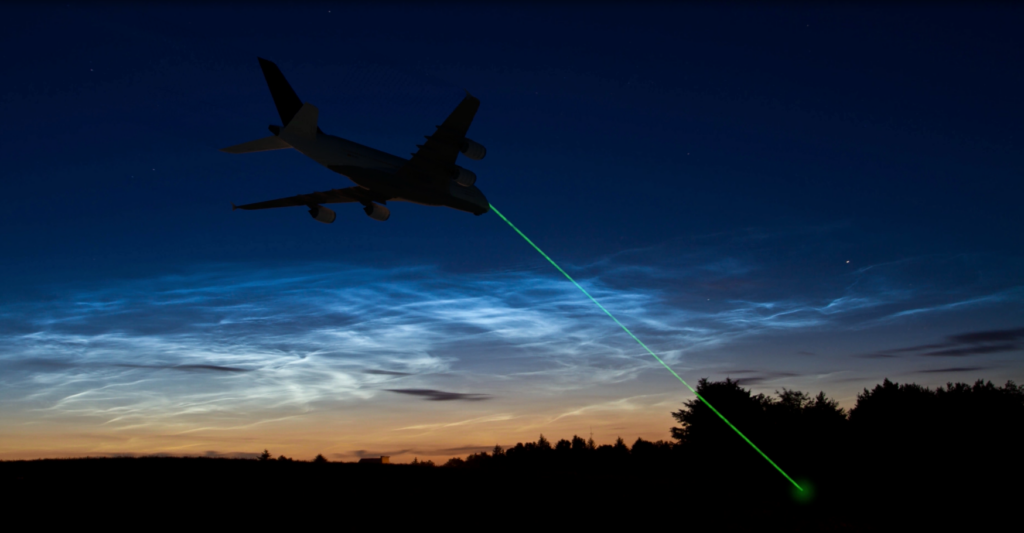
Laser strikes, laser attacks, or laser illuminations on commercial aircraft are causing global concern as laser pointers continue to increase in strength and decrease in price. Here are some facts about why laser pointers can be potentially dangerous for pilots that are attempting to land or depart an airport:
- Laser strikes on commercial aircraft are rising globally and laser pointers are increasing in power and decreasing in price. Lasers can distract pilots during critical phases of flight and can cause temporary visual impairment.
- According the to the Federal Aviation Administration (FAA), there was a 1300% increase in the number of laser incidents in the United States between 2005 and 2013.
- In 2015, according to the FAA, the number of reported laser incidents nearly doubled to 7,703 in commercial aviation. In 2016 there were 7,442 reported incidents.
- As of April 29, 2017, there were 2,078 laser illuminations of aircraft reported to the U.S. Federal Aviation Administration in 2017 alone.
- In 2015, there were 1,439 laser incidents reported to the Civil Aviation Authority (CAA) in the UK and 1,258 in 2016.
- The Civil Aviation Authority (CAA) reported that in 2016, Heathrow remained the airport experiencing the highest level of attacks at 151 incidents – up from 121 (25%) in 2015. The number of laser attacks at Glasgow airport almost doubled to 83 in 2016, making it the second most targeted airport. Birmingham was third at 73, followed by Manchester (72), London City (62) and London Gatwick (55).
- In 2015 there were almost 600 laser strikes reported to Transport Canada.